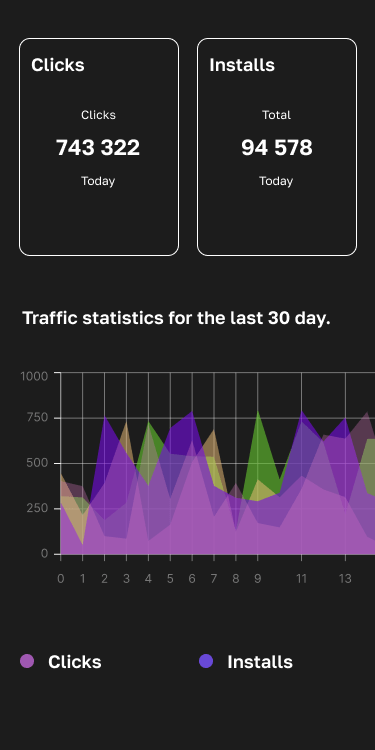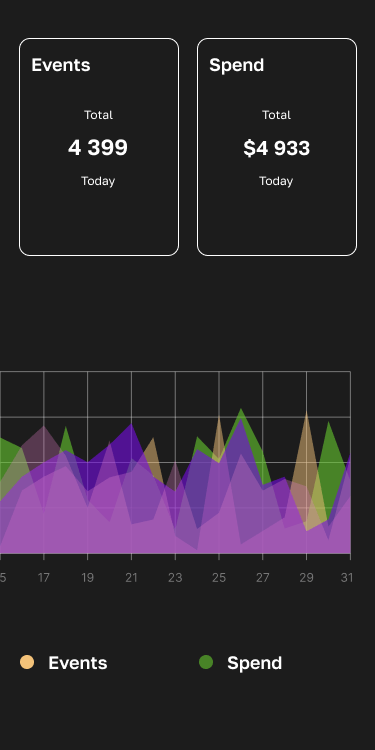The last four years have seen privacy shift from a compliance checkbox to a full-scale growth lever. Apple’s App Tracking Transparency (ATT) has matured, Google’s Privacy Sandbox for Android is nearing general availability, and regulators worldwide keep tightening data-use rules. Below is a practical deep dive for UA managers buying OEM and in-app traffic: what changed, what’s coming next, and how to win in a “consent-first” ecosystem.
1 | The ATT After-Shock: Hard Numbers & New Habits
- Opt-ins are climbing, not collapsing. AppsFlyer’s April 2025 dataset shows 50% of iOS users globally now grant tracking permission — ten points higher than when ATT launched in 2021.
- Budgets followed the data. iOS ad spend jumped 26% YoY (2023 → 2024), while Android grew 10%. Marketers are clearly regaining confidence in measurable iOS inventory.
What changed the game
Practical tips
- Model early revenue, not LTV. With postback 1 arriving 24–48 h after install, focus on signals users create in the first two days (tutorial complete, add-to-cart, level 2 reached).
- Use probabilistic uplift tests. Run incrementality experiments to validate SKAN performance and avoid over-fitting to noisy conversion values.
- Show the value of opting-in. Transparent pre-prompts (“Help us keep the app free by allowing…”) consistently beat default prompts on both opt-in rate and user sentiment.
2 | Privacy Sandbox on Android: What OEM & In-App Buyers Need to Know
Android 15, due later this year, ships with the latest Ad Services extensions, bringing Topics, Protected Audience, and Attribution Reporting APIs to production devices. Google still supports GAID for “at least two years” from its 2022 announcement, giving advertisers a transition runway.
Key API snapshots
| API | Purpose | UA Impact |
| Topics | On-device interest taxonomy updated weekly | Contextual look-alikes without user IDs |
| Protected Audience (FLEDGE) | On-device auctions for remarketing | OEM pre-installs & carrier apps can run remarketing lists without sharing IDs |
| Attribution Reporting | Event-level and aggregated postbacks | Last-click plus cohort-level ROAS without exposing GAID |
Action plan before Android 15 GA
- Sandbox-ready SDKs. Confirm your MMP/analytics SDK supports the new Ad Services APIs.
- Parallel testing. Run GAID-based and Sandbox campaigns side-by-side; compare modeled ROAS.
- Creative diversification. Sandbox limits frequency capping and cross-app profiling, so ad relevance leans heavily on in-creative context (localization, dayparting).
3 | Global Rulebook: Beyond GDPR & CCPA
Legislators keep raising the bar:
- Data-localization waves (e.g., China’s PIPL, India’s Digital Personal Data Protection Act) require that personal data stay “in-country,” complicating global attribution.
- Sensitive-category bans spread from Europe’s Digital Services Act to Brazil’s LGPD enforcement — blocking ads that profile minors, health conditions, or political leanings.
Compliance toolkit
- Consent Management Platforms (CMP). Use IAB TCF v2.2 strings to pass granular consent status into SDKs.
- Data Clean Rooms. Already 80 % of big-budget advertisers plan to use a clean room by 2025, according to Gartner research.
- Event-level minimization. Store only the events truly needed for optimization; aggregate everything else.
4 | Life Without Universal Identifiers: First-Party & Alternative IDs
a) First-Party Signals
Push tokens, server-side login IDs, and CRM events become gold once users give explicit consent. Tie campaign IDs to these signals via deep links or deferred SDK parameters.
b) OAID & OEM-Specific IDs
In China and many “Google-free” devices, OAID (Open Anonymous ID) replaces GAID. All major MMPs now support OAID for deterministic attribution.
c) “Stable ID” Cohorts
Some DSPs cluster device-side signals (locale + app list + connectivity) into probabilistic but stable cohorts that respect privacy tiers — useful for frequency capping when personal IDs vanish.
5 | Seven-Step Playbook for 2025-Ready Mobile UA
- Audit consent flows. Aim for > 50 % ATT opt-in and clear GDPR/CCPA disclosures.
- Master SKAN 4 mapping. Allocate the 64 fine values to revenue buckets; reserve coarse buckets for retention.
- Join the Android Sandbox beta. Test Attribution Reporting now to avoid GAID cliff-edges later.
- Invest in modeled measurement. Blend SKAN, Sandbox, and clean-room aggregates into a unified ROAS dashboard.
- Double down on OEM inventory. Pre-loads and system recommendations still offer deterministic device-level installs — even in privacy-first OS versions.
- Run incrementality tests quarterly. Lift studies guard against optimization to noise when data granularity shrinks.
- Educate the C-suite. Frame privacy costs as long-term brand equity — transparent practices boost conversion and loyalty.
Bottom line
Privacy regulations aren’t a storm to wait out—they’re the new climate. Marketers who embrace aggregated measurement, on-device APIs, and ethical data collaboration will not only stay compliant; they’ll gain a durable edge in UA efficiency and user trust.
Have questions about implementing any of these tactics in your OEM or in-app campaigns? Reach out to our Qi Ads team—we’re here to help you turn privacy into performance.










